Successful dividend investing is simple, though not necessarily easy. There are nuances which trip up many investors (including most professionals!). These twists and turns create opportunities for contrarian-minded income investors like us.
So, ready to retire on dividends? Follow these five steps and we’ll do it together. Let’s start with an obvious yet underappreciated rule for income investors.
Step 1: Count Your Dividends
Since we focus on high yield, most of our returns come from the “yield” component of stocks. For example, we added this high-paying bond fund to our portfolio 2016 and its price-only returns look quite pedestrian. We’ve gained 109%, while the price is up only 20%.
Dividends Make the 89% Difference
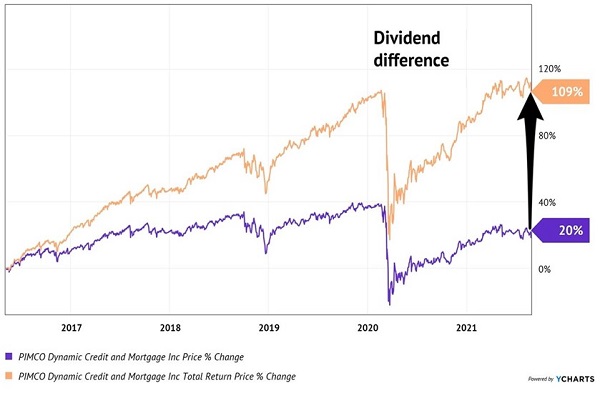
The majority of our 109% gains have been delivered via cash dividends. The orange (top) line shows the real driver of our profits!
Step 2: Find Price Upside, Too
While we could build a portfolio that’s 100% invested in these types of safe bonds and do just fine, we’re better off putting 50% or so of our cash in stocks. The upside is too good to ignore.
When we added Chemours (NYSE:CC) to our CIR portfolio in June 2020, it paid a sweet 7.4%. The world economy and demand for specialty chemicals looked dicey.
Why We Own Stocks: Fast 90% Gains

It was a great time for contrarians to buy! We rode shares for 90% total returns (including dividends).
Not all dividend stocks go up, however. Some pending disasters are value traps, which is why we always consider the cash flow that powers our payout.
Step 3: Monitor Dividend Coverage
Dividend cuts are no fun. Not only are they a pay reduction for us, but also (worse) they destroy capital. Take the case of CenturyLink (which recently changed its name to Lumen (NYSE:LUMN), a company that has been writing its investors dividend checks it couldn’t cash since I called out this “paper telecom tiger” in May 2016 (and many times since!).
At the time, CTL was paying out 135% of its earnings as dividends. The company wasn’t growing profits, either so the payout eventually had to go. Mr. Market eventually sniffed this out, investors dumped the stock, and sure enough, CTL’s management team made the inevitable deadly cut:
Stocks Rise and Fall with Their Dividends
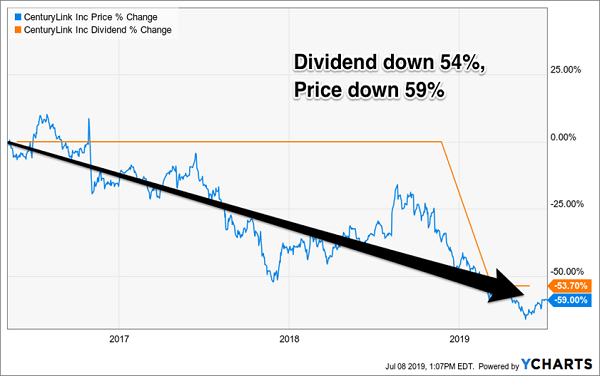
CTL’s stock price dropped 59% on top of a 54% pay cut!
Step 4: Don’t Fight the Fed
“Don’t Fight the Fed” was chapter four in investing wizard Martin Zweig’s legendary book, Winning on Wall Street. Here’s why we’ll make it step four.
Zweig devoted 40 thoughtful pages to teaching readers why they should “go with the flow” with respect to the Fed’s trend at any given moment.
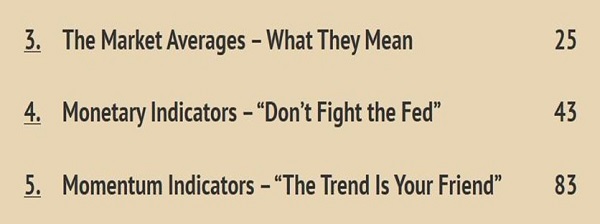
The only financial fundamental that matters right now is the Fed-driven money supply. Chair Jay Powell (JP) pulled the lever on the quantitative easing (QE)— “money printing”—machine early and often since March of last year, smashing all previous records in the largest money creation event of all-time (as defined by M2, the measure of the amount of money “out there” in circulation).
“M2” Money Supply: +34% Since 2020
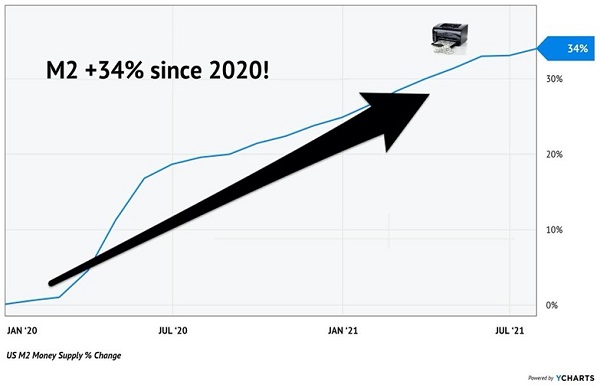
This is the “big picture” reason why the major trend in stock and bond prices still points up. It is also what is different this time, versus March. There’s an ocean of new money sloshing around out there.
Amidst the talk of Fed “mandates”—from inflation targets to employment levels—there’s one unstated mandate that goes unmentioned: Powell’s doing everything he can to support the stock market!
Successfully, too. Investor sentiment by many measures has now, incredibly, rebounded to pre-virus levels. (The wonders of nearly three trillion new greenbacks!) The S&P 500 is priced for near-perfection in a world that, to anyone paying attention, is anything but perfect now.
I’ll tell you what is near-perfect, however, and that is a central banker on “full tilt.” Like a poker player trying to win back their initial stake, our man JP is getting nuttier by the week.
After playing some serious footsie with the corporate bond market, our Fed lead JP made it official. Earlier this year, he announced that the Fed was going to begin building its own corporate bond portfolio.
US Treasuries not yielding enough? No problem! Thanks to Powell, buy corporates for more income. Our printing press is backstopping them both!
Step 5: Favor Out-of-Favor
What did our winners in steps one and two have in common? Two things:
- They were well run, and (most importantly)
- We bought them when each was out of favor.
Contrarian investing should be uncomfortable. We want to buy stocks when their yields are higher than usual. To put it plainly, we want to buy this stock when our “dividend per dollar” (as reflected by the orange line) is high. That means the price is low because other investors are fearful, giving not only a high yield, but also potential for high price gains!
High Historical Yield Meant Low Price
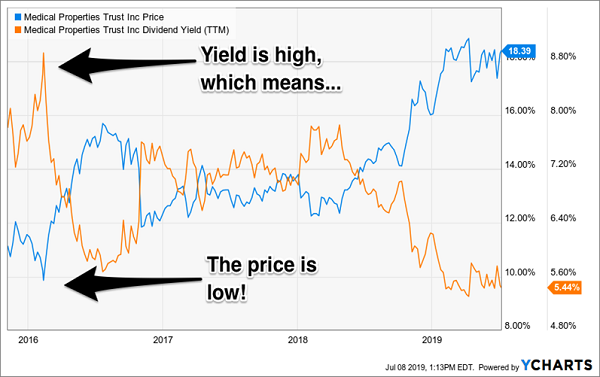
And likewise, we want to purchase closed-end funds (CEFs) when they are trading at discounts to the value of the assets on their books. This is a unique feature of CEFs because they trade like stocks, with fixed pools of shares. They can and will trade at premiums and discounts to the value of their bond portfolios, which means we can sit back and wait for bargains.
Disclosure: Brett Owens and Michael Foster are contrarian income investors who look for undervalued stocks/funds across the U.S. markets. Click here to learn how to profit from their strategies in the latest report, "7 Great Dividend Growth Stocks for a Secure Retirement."
